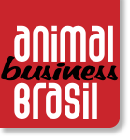South Korea: Livestock and Products Annual
The ongoing revival of South Korea’s food service sector strengthened consumer demand for beef and pork in 2022. This positive trend is expected to continue in 2023 as Korea’s hotel, restaurant, and institutional sectors gain momentum in a post-covid market. However, the pace and scale of food service growth is unclear as the country grapples with notable macroeconomic challenges such as inflation and a depreciating currency. Korean cattle producers will aim to capitalize on high meat prices and strong demand for domestic beef and will increase slaughter rates into 2023. Swine production will wane over the first half of 2023 on high input costs. Large import volumes for beef and pork that were witnessed in 2022 are expected to remain elevated in 2023.
Bulgaria: Livestock and Products Annual
In 2021 and 2022 to date, the Bulgarian livestock industry has successfully recovered following the 2019 African Swine Fever (ASF) crisis. The major challenges in 2021/2022 were related to sharply increasing feed grain and energy prices, skyrocketing inflation, and fluctuations in consumer demand related to the pandemic and the war in Ukraine. Bulgaria’s political stalemate negatively affected domestic support policies, but despite these challenges, commercial pork farmers have rebounded. Most backyard farmers have stopped raising pigs. Consumer demand has improved due to stabilization of the hotel, restaurant, and institutional (HRI) industry, and better travel and tourism seasons, with beef and pork consumption growing by a double-digits and reaching record high consumption levels in 2021 and most likely in 2022.
